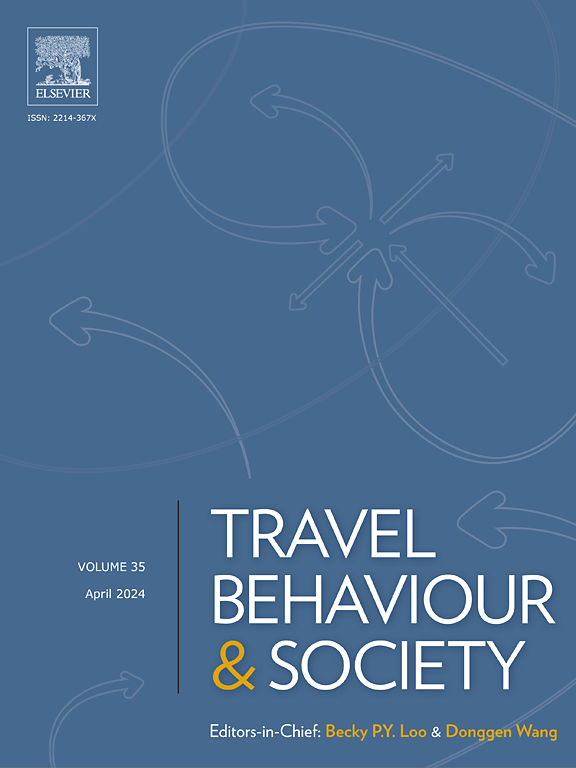建筑环境对无桩共享单车与地铁融合的影响:空间非线性分析
IF 5.7
2区 工程技术
Q1 TRANSPORTATION
引用次数: 0
摘要
本研究提出了一种将随机森林模型的核心原理与地理加权回归的空间划分规则相结合的空间机器学习模型,以研究建筑环境因素对无桩共享单车-地铁一体化使用的空间非线性影响。利用北京DBS数据,通过优化的基于空间网络密度的方法,计算了高峰时段四种出入口综合利用类型。根据不同的集水区大小,分析了与社会经济和人口、土地利用、道路网络设计、交通设施和车站属性相关的21个独立变量。结果表明:所有建筑环境变量对综合利用均表现出非线性效应,其有效范围和阈值效应在不同站位之间存在差异;人口密度和房价是影响晨间通道综合利用的主要变量。商业场所的积极影响在郊区更为明显,而教育场所的影响在北部城市更强。位于离市中心中等距离的车站占综合使用行程的大部分,DC对郊区的影响大于对城市地区的影响。这些发现为加强自行车共享和地铁系统之间的无缝连接提供了有价值的见解。本文章由计算机程序翻译,如有差异,请以英文原文为准。
Built environment effects on dockless bikesharing–metro integration: A spatial nonlinear analysis
This study proposes a spatial machine learning model that integrates the core principles of the random forest model with the spatial partitioning rules of geographically weighted regression to investigate the spatial nonlinear effects of built environment factors on dockless bikesharing (DBS)–metro integrated use. Using DBS data from Beijing, China, four types of access and egress integrated use during peak hours were calculated through an optimized spatial network density-based method. Twenty-one independent variables related to socioeconomic and demographic, land use, road network design, transport facility, and station attributes, were analyzed based on varying catchment area sizes. The results demonstrate that all the built environment variables exhibit nonlinear effects on integrated use, with most of their effective ranges and threshold effects varying among stations. Population density and housing prices emerge as dominant variables affecting morning access integrated use. The positive impact of commercial places is more pronounced in suburban regions, while the influence of educational places is stronger in the northern city. Stations located at a moderate distance to city center (DC) account for the majority of integrated use trips, with DC exerting a greater influence on suburban areas than on urban areas. These findings offer valuable insights for enhancing seamless connections between bikesharing and metro systems.
求助全文
通过发布文献求助,成功后即可免费获取论文全文。
去求助
来源期刊

Travel Behaviour and Society
TRANSPORTATION-
CiteScore
9.80
自引率
7.70%
发文量
109
期刊介绍:
Travel Behaviour and Society is an interdisciplinary journal publishing high-quality original papers which report leading edge research in theories, methodologies and applications concerning transportation issues and challenges which involve the social and spatial dimensions. In particular, it provides a discussion forum for major research in travel behaviour, transportation infrastructure, transportation and environmental issues, mobility and social sustainability, transportation geographic information systems (TGIS), transportation and quality of life, transportation data collection and analysis, etc.
 求助内容:
求助内容: 应助结果提醒方式:
应助结果提醒方式:


